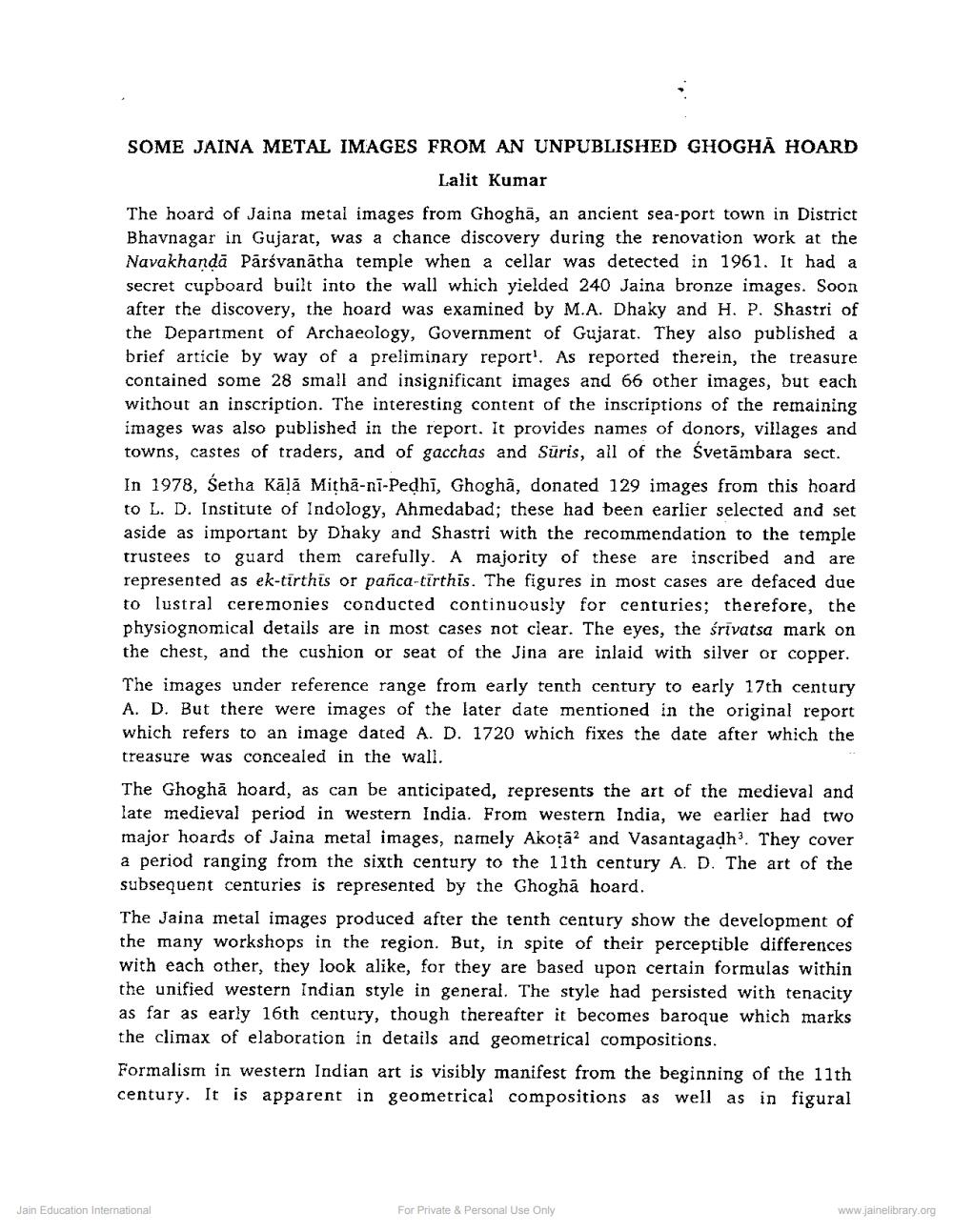Book Title: Some Jaina Metal Images From Unpublished Ghogha Hoard Author(s): Lalit Kumar Publisher: Z_Nirgrantha_1_022701.pdf and Nirgrantha_2_022702.pdf and Nirgrantha_3_022703.pdf View full book textPage 1
________________ SOME JAINA METAL IMAGES FROM AN UNPUBLISHED GHOGHĀ HOARD Lalit Kumar The hoard of Jaina metal images from Ghoghā, an ancient sea-port town in District Bhavnagar in Gujarat, was a chance discovery during the renovation work at the Navakhandā Pārsvanātha temple when a cellar was detected in 1961. It had a secret cupboard built into the wall which yielded 240 Jaina bronze images. Soon after the discovery, the hoard was examined by M.A. Dhaky and H. P. Shastri of the Department of Archaeology, Government of Gujarat. They also published a brief articie by way of a preliminary report'. As reported therein, the treasure contained some 28 small and insignificant images and 66 other images, but each without an inscription. The interesting content of the inscriptions of the remaining images was also published in the report. It provides names of donors, villages and towns, castes of traders, and of gacchas and Sūris, all of the “vetāmbara sect. In 1978, Setha Kālā Mitha-ni-Pedhi, Ghoghã, donated 129 images from this hoard to L. D. Institute of Indology, Ahmedabad; these had been earlier selected and set aside as important by Dhaky and Shastri with the recommendation to the temple trustees to guard them carefully. A majority of these are inscribed and are represented as ek-tirthis or pañca-tirthis. The figures in most cases are defaced due to lustral ceremonies conducted continuously for centuries; therefore, the physiognomical details are in most cases not clear. The eyes, the śrīvatsa mark on the chest, and the cushion or seat of the Jina are inlaid with silver or copper. The images under reference range from early tenth century to early 17th century A. D. But there were images of the later date mentioned in the original report which refers to an image dated A. D. 1720 which fixes the date after which the treasure was concealed in the wall. The Ghoghā hoard, as can be anticipated, represents the art of the medieval and late medieval period in western India. From western India, we earlier had two major hoards of Jaina metal images, namely Akoţā? and Vasantagadh. They cover a period ranging from the sixth century to the 11th century A. D. The art of the subsequent centuries is represented by the Ghoghā hoard. The Jaina metal images produced after the tenth century show the development of the many workshops in the region. But, in spite of their perceptible differences with each other, they look alike, for they are based upon certain formulas within the unified western Indian style in general. The style had persisted with tenacity as far as early 16th century, though thereafter it becomes baroque which marks the climax of elaboration in details and geometrical compositions. Formalism in western Indian art is visibly manifest from the beginning of the 11th century. It is apparent in geometrical compositions as well as in figural Jain Education International For Private & Personal Use Only www.jainelibrary.orgPage Navigation
1 2 3 4 5 6 7 8
